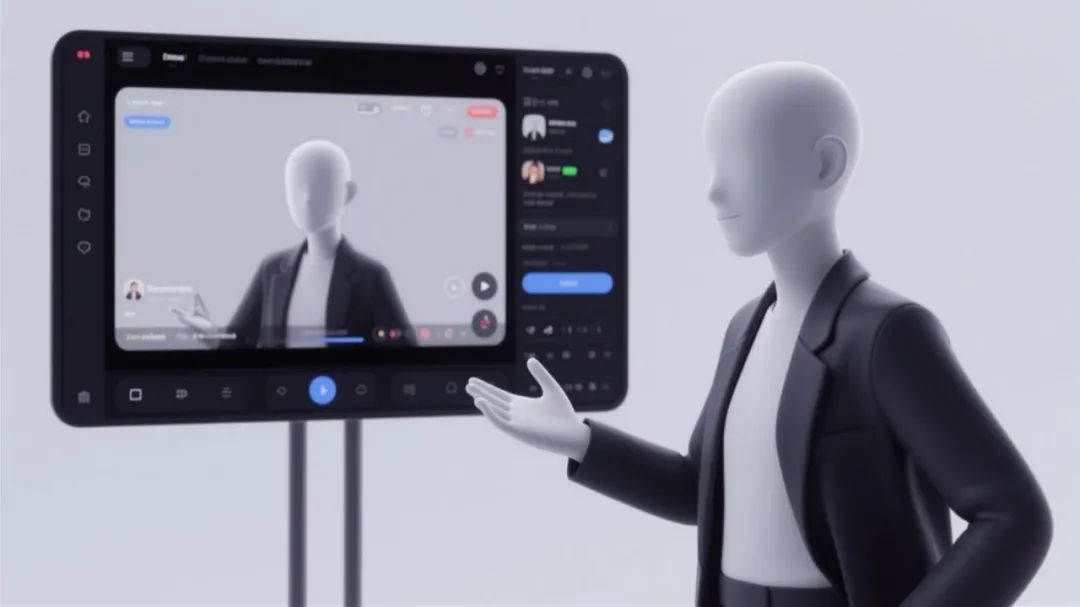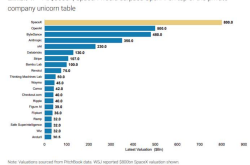Digital Humans Conquer Live Streaming: A True Trend or a Fleeting Fad?
![]() 07/25 2025
07/25 2025
![]() 483
483

Digital humans cannot replace real anchors.
During this year's 618 shopping festival, Luo Yonghao's "digital human" persona conducted a seven-hour live streaming sales session on Baidu Select. According to official data from Baidu E-commerce, this live stream attracted over 1.3 million viewers, with a Gross Merchandise Volume (GMV) exceeding 55 million yuan. Notably, one-third of the product sales exceeded Luo Yonghao's live stream at the end of May.
Post-stream, its influence continued to grow. Many harbor high hopes for the digital human live streaming model, even believing it could become AI's next large-scale application scenario.
In fact, digital human live streaming began emerging in the market as early as three or four years ago. According to iiMedia Consulting, the number of virtual anchor (digital human) enterprise registrations increased by 948 in 2022, with a growth rate of 68%, equivalent to two-thirds of the growth rate of store-based live streaming in 2024.
However, it's crucial to note that Luo Yonghao's digital human is, to some extent, an anomaly in the industry. Historically, digital humans' live streaming data has lagged significantly behind that of real human anchors.
A case in point is the virtual anchor "I'm Not a Foodie," which conducted live streaming sales for three consecutive months in 2022, achieving a GMV of just over 10 million yuan—lower than most mid-tier anchors on the market. Additionally, Ling Yanhuan, a virtual image launched by Douyin in 2023, vanished after being online for over nine months, with its fan base declining yearly.
The reasons for this gap primarily lie in technical bottlenecks and differences in business logic. While current digital humans can produce basic script output, their interactive responses remain rigid. Real human anchors can adjust their explanations in real-time and respond to unexpected questions based on live chat comments, whereas digital humans often struggle to answer complex questions correctly, making it hard to establish genuine emotional connections.
The success of Luo Yonghao's digital human live streaming heavily relies on the accumulation of his real human IP and a mature product selection system, rather than being indicative of digital human technology's universal triumph.
From the influx of enterprises years ago to the withdrawal of most digital humans today, digital humans in live streaming, akin to the virtual anchor trend of yesteryear, are experiencing the transition pains from conceptual frenzy to real-world application.
01 What are the genuine drivers behind the rise of digital human live streaming?
So-called "digital human" anchors refer to virtual character images crafted by referencing human appearance, mentality, and other traits. Besides digital avatars based on celebrities like Luo Yonghao, there are also original virtual characters created based on customized needs, such as "M Sister" and "Huaxizi," the virtual image spokespersons for L'Oréal and Florasis.
Currently, most digital human live streaming products on the market fall into the latter category. The core advantage of this customized model is that merchants only need to spend a few thousand to tens of thousands of yuan to acquire a tailored digital human. According to a case from Baidu Intelligent Cloud, a catering enterprise utilized a digital human for a six-hour live stream at a cost of just 15% of that for a real human anchor.
Unlike real human anchors, who require payment per session, digital humans often represent a one-time investment with minimal additional expenses thereafter, significantly reducing costs.
Moreover, digital humans offer certain advantages in live streaming stability. While real human anchors can sustain live streaming for up to seven or eight hours, digital humans can work tirelessly and continuously. Their stable "character setting" also helps merchants avoid the risk of anchors frequently causing scandals.
Especially against the backdrop of surging demand for store-based live streaming, consumers' expectations for anchors' traffic and live streaming pace have notably decreased, shifting their focus to the accuracy of product performance, effectiveness, and other information provided by anchors. In sectors such as local life, clothing, liquor enterprises, finance and taxation, and warehousing, many anchors don't even need to interact excessively with users. The advent of digital humans has precisely filled this market need.
Furthermore, advancements in AI technology have also propelled the application of digital humans to a certain extent.
As early as 2023, Bilibili UP owner @-LKs- attempted to clone his own digital human but received criticism from many netizens due to stiff character movements and lagging video playback. However, in Luo Yonghao's recent live stream, many of these issues were apparently resolved. Some netizens commented that the digital human's movements and tone were very natural after watching the live stream.
It's the convergence of these various "benefits" that has spurred merchants to successively enter the realm of digital human live streaming over the past period. Indeed, digital humans have fostered growth for merchants in certain areas. Official data from JD.com reveals that the average conversion rate of digital humans is 10%, with a 30% increase in off-peak live streaming conversion rates compared to before.
02 Can digital humans usurp real humans?
In reality, the emergence of an emerging technology is often accompanied by a short-term market gap in the initial stage, fostering the illusion of immense development potential for the industry.
The truth is that digital humans still can't compete with real human anchors in terms of live streaming effects, emotional engagement, and user interaction. Additionally, merchants encounter multiple issues such as platform control and technical maintenance when using digital humans for live streaming.
A telling example is that earlier this year, many merchants reported that the digital human products they purchased for tens of thousands of yuan were banned several times by the platform for "live streaming violations" within less than a month of going live.
The reasons behind this are twofold: on the one hand, platforms are cautious about promoting digital humans and have stringent rules regarding platform registration and real human driving. However, the more crucial reason is the immaturity of digital human products, leading to issues such as frequent long-term content repetition during live streaming and lack of recognizability of live streaming images, inevitably prompting the platform to deem it as recorded broadcasting or facial similarity.
This also signifies that not all merchants can replicate the technical effects of Luo Yonghao's live streaming room. Merchants still face certain technical hurdles when generating digital humans, and digital humans aren't a one-time solution. Merchants still need to continuously update and maintain them post-purchase.
Meanwhile, from a user perspective, digital human live streaming is far from achieving the efficacy of real human live streaming. Currently, most digital human products on the market still grapple with issues such as expressionless faces, stiff movements, and mismatched voices and lip movements. Instances of digital humans encountering bugs and malfunctions also occur periodically. Recently, some netizens discovered that after sending a comment with "developer mode" in the live streaming room, the digital human would execute any command, no matter how absurd, once leading to a loss of control in the live streaming scene.
Apart from lacking core business capabilities, digital humans also significantly diminish the emotional interaction and product trustworthiness during live streaming. Without the backing of celebrity effects, their user conversion rates during prime time are still lower than those of real human anchors.
Take last year's independent digital human "Yi Yi" launched by Meiwan as an example. Although "Yi Yi" is already superior to most products on the market in terms of response and interaction capabilities, its traffic data is still less than one-tenth of Li Jiaqi's live streaming room.
This explains why most digital humans currently on the market only go live during non-core hours with low traffic and serve as auxiliary roles to maintain the live streaming room's activity and provide product explanations. They still don't possess a significant edge in traffic appeal.
03 Reallocation of Market Resources
Although the current applicable fields of digital human live streaming are still relatively limited, it has already reshaped the resource allocation of live e-commerce to a certain extent.
The first to be impacted are small and medium-sized anchors with direct stakeholder interests and strong substitutability. According to Baidu Select's 618 data, top merchants on the platform primarily adopt a mixed mode of real and digital human live streaming, while small and medium-sized merchants adopt a pure digital human live streaming mode. This implies that some anchors who previously served small and medium-sized merchants have been supplanted by digital humans.
In contrast, for top anchors, the characteristics of digital humans, such as long online hours, strong content verticality, and single product selection, are inherently different from their advantages, so they haven't been significantly affected thus far.
However, this also begs the question: Is it imperative for top anchors like Li Jiaqi and Xin Ba to follow Luo Yonghao's lead and launch their own digital avatars? The answer is unequivocally no.
For now, besides Luo Yonghao and Liu Qiangdong, who don't primarily engage in live streaming sales, no top anchors have ventured into this field.
The reason is that these anchors already enjoy a robust traffic advantage. Shifting to digital avatars would instead diminish the uniqueness of their IP and erode their core strengths of potent live streaming effects and emotional engagement, thereby dispersing their traffic.
Another reason is that as an emerging product, digital avatars currently lack sufficient market regulation. If top anchors authorize their digital avatars to be used by other accounts, it could tarnish their reputation and trigger a trust crisis among users.
Slice authorization serves as a cautionary tale. In recent years, many top anchors have transferred the ownership of video recordings to other accounts through slice authorization. However, due to their inability to control the content published by these accounts, they often find themselves "forced" to promote fake products unknowingly, plunging into a public relations crisis of false marketing.
In other words, the advent of digital humans is actually diverting some funds from mid-tier and small and medium-sized anchors to large model manufacturers providing digital human generation services, while saving expenses for merchants.
For now, for companies like Alibaba and ByteDance, whose primary business model revolves around content e-commerce, digital human generation technology is merely a means. How to leverage digital human technology to expand business for merchants and continuously broaden their merchant base is the purpose behind launching this venture.
For vendors like JD.com and Baidu, which lag behind in content e-commerce, digital humans represent a potential path to differentiation. This is why both have been relatively active in promoting digital humans. In April this year, Liu Qiangdong conducted a live stream for over an hour using his digital avatar, and this viral Luo Yonghao live stream emanated from Baidu Select.
It's worth mentioning that a month has passed, yet the heated discourse about Luo Yonghao's digital human live streaming remains stuck on the search page, with the actual popularity and promotional effect still limited. As one insider remarked, "The wind of digital human live streaming hasn't even picked up yet, and it seems to be waning."
Evidently, while digital human live streaming does possess its own application scenarios, for merchants, real human live streaming remains an indispensable foundation. The key to building a product moat lies in how effectively to invest the saved costs in enhancing product quality.






